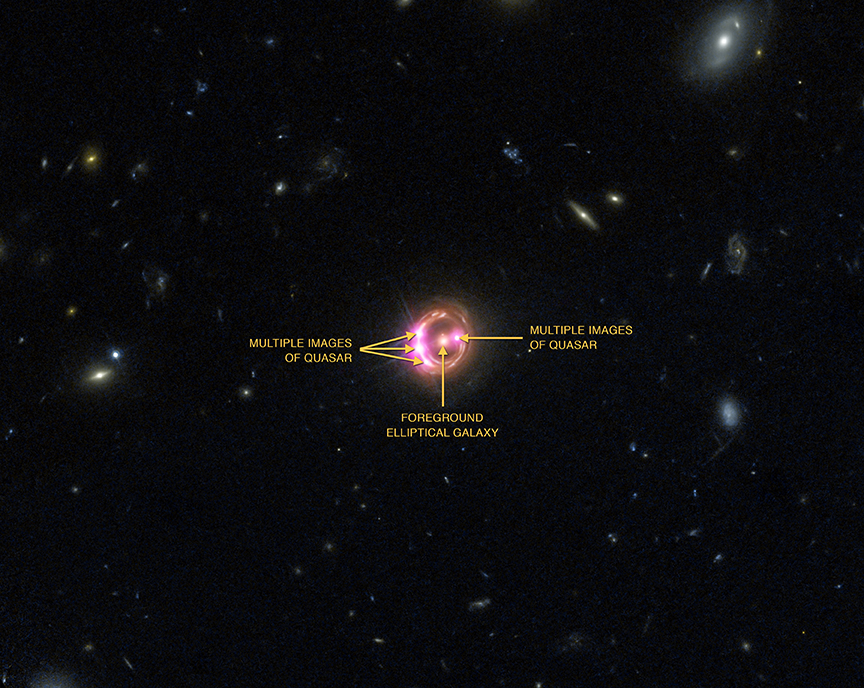
 Credit: X-ray: X-ray: NASA/CXC/Univ of Michigan/R.C.Reis et al; Optical: NASA/STScI
Credit: X-ray: X-ray: NASA/CXC/Univ of Michigan/R.C.Reis et al; Optical: NASA/STScI
GR Bonanza
Einstein's theory of General Relativity, published in 1916, fundamentally revised our view of the gravitating Universe. The theory described how mass warps spacetime. The bending of light rays by the warped spacetime around a massive object (the Sun) was first detected by Eddington during his famous expedition to observe the total solar eclipse of May 29, 1919. Since that time the warping of spacetime, or "gravitational lensing", is an accepted phenomenon. Einstein's theory of General Relativity also predicts the existence of black holes, which warp spacetime to such an extent that nothing, not even light itself, can escape. Some believe that at the center of a black hole lies the singularity, a point of infinite density, mass which occupies no volume of space (at least not in our Universe). Black holes can spin, and spinning black holes are even more peculiar than their non-spinning cousins. A spinning black hole drags spacetime around with it, creating an "ergosphere", a region where nothing can resist spinning. Increasing the spin of a black hole also shrinks the size of the black hole's "event horizon", the region separating black hole's inside from its outside. In theory, a black hole could spin so fast that its event horizon shrinks completely, revealing its singularity to the extant Universe. The image above shows GR at work in all its glory. This composite X-ray and optical image shows a distant quasar called RX J1131-1231. This quasar harbors a supermassive black hole, which is actively swallowing matter (and spin?) from its environment. It also happens to lie almost exactly behind a massive elliptical galaxy, so that the light from the quasar is stretched into a ring and magnified by the warped spacetime around the elliptical galaxy. X-ray studies of the warped, amplified image of the quasar by the Chandra and XMM-Newton X-ray observatories showed the presence of extremely hot iron atoms just outside the black hole's event horizon. For the iron atoms to exist so close to the black hole, these X-ray measurements imply that space near the black hole must be spinning at over half the speed of light, and the supermassive black hole itself must be spinning near the maximum rate allowed by General Relativity. Would denizens of this active galaxy be treated to the sight of a naked singularity?
Published: March 31, 2014
<
HEA Dictionary ● Archive
● Search HEAPOW
● Other Languages
● HEAPOW on Facebook
● Download all Images
● Education ● HEAD
>

Each week the HEASARC
brings you new, exciting and beautiful images from X-ray and Gamma ray
astronomy. Check back each week and be sure to check out the HEAPOW archive!
Page Author: Dr. Michael F. Corcoran
Last modified Monday, 26-Feb-2024 17:20:32 EST


